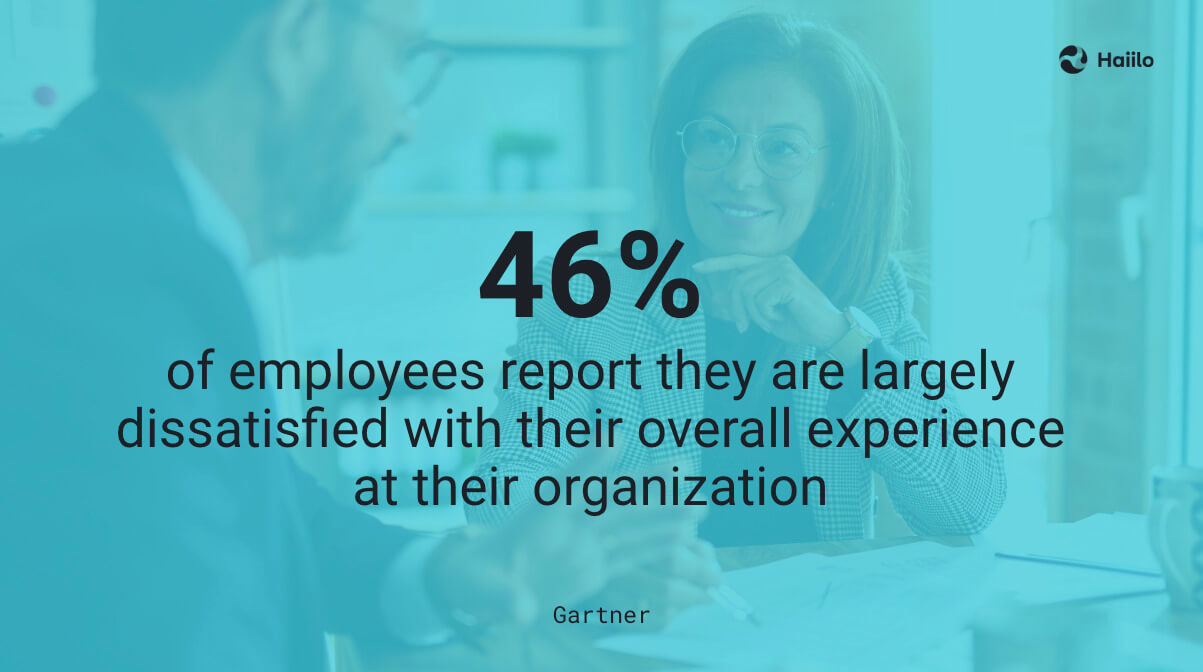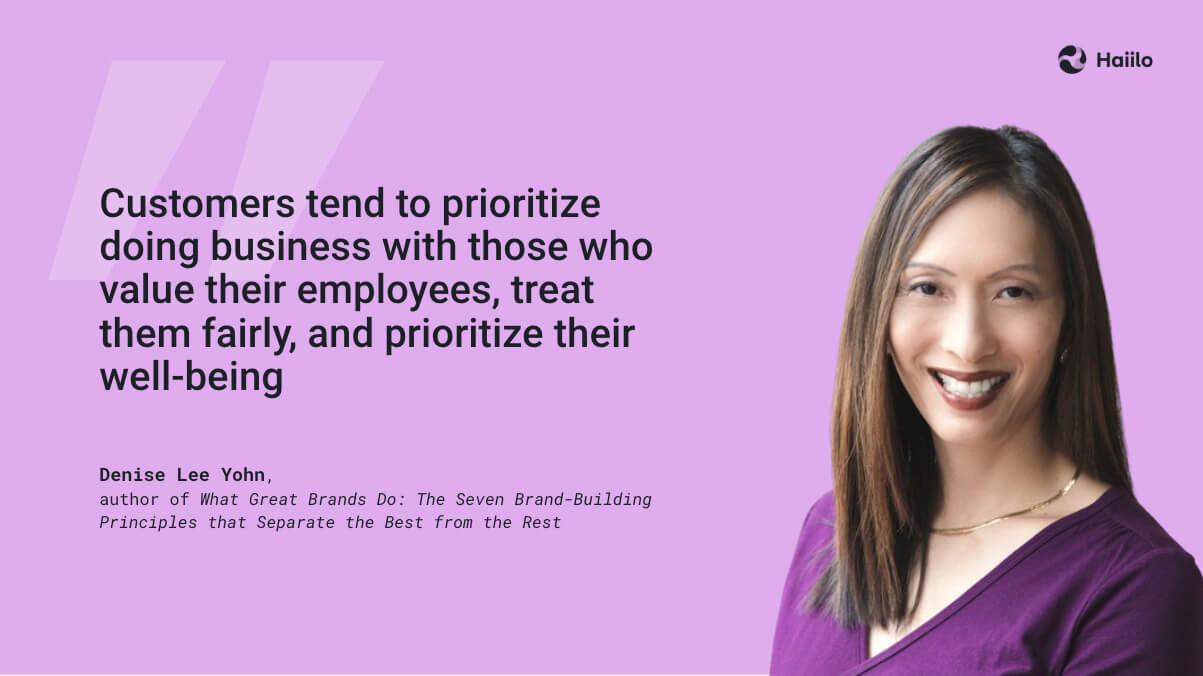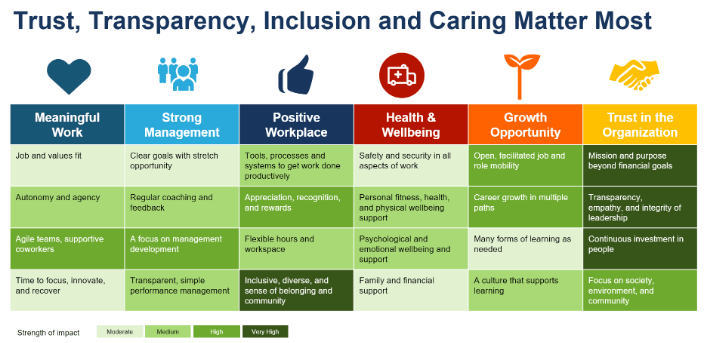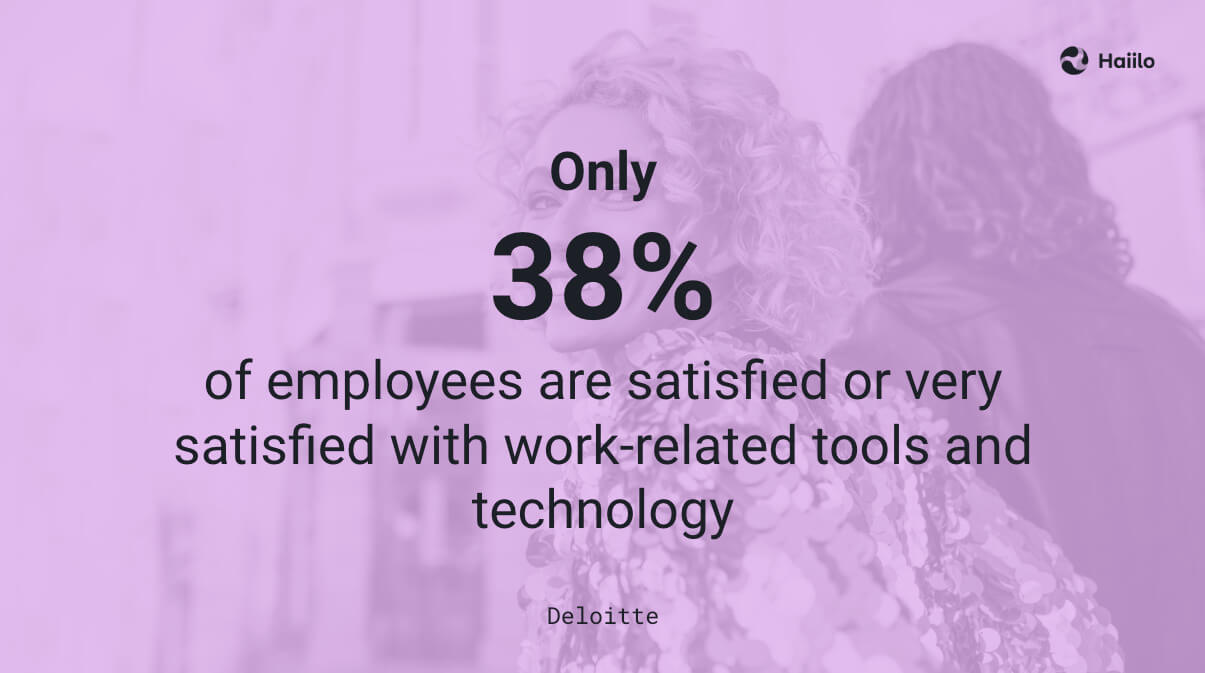Managing employee experience is one of the most important prerequisites for ensuring business success and continuity.
Employee experience in the workplace has a direct impact on employee engagement, productivity, retention, and your organization’s employer brand.
In this blog, you will learn about what employee experience management is, why is it important, and how to set up and manage a successful strategy.
Employee Experience Management Defined
Employee experience management is a strategic approach to understanding, validating, nurturing, and measuring key workplace factors that directly or indirectly impact employee happiness and engagement at work.

Employee experience management should never be perceived or persuaded as a one-time initiative or a campaign to boost employee experience. It should be a continuous project that never ends and aims to constantly improve how your employees perceive you as an employer.
Your employee experience management strategy should be aligned and built upon your core company values and employee value proposition.
As nicely explained by Gartner:
Rather than using an investment-focused approach, organizations should focus on shaping how the employee experience feels. This approach to improving employee experience satisfaction focuses on influencing and improving employees’ feelings about their overall experience using psychological, motivational, and social principles.
Let’s now dig deeper into why managing your employees’ experience is so important for organizational success and business continuity.
Find out how Haiilo can help you improve your employees’ experience!
Why Managing Employee Experience Is Important
Employee experience remains a top talent concern for HR leaders, yet 46% of surveyed employees report they are largely dissatisfied with their overall experience at their organization, resulting in low employee motivation.
Employee engagement and productivity
Gartner’s research has proved that employee experience has a direct impact on employee engagement and performance. According to the research, companies that continuously invest in shaping positive employee experiences can achieve employees who are 44% more likely to be high performers.
Furthermore, MIT researchers found that companies in the top quartile of EX developed more successful innovations, deriving twice the amount of revenues from their innovations as did those in the bottom quartile.
📹 Check out our Masterclass Strategies for Driving Employee Performance and Motivation!
Employee retention
Next, proper employee experience management can significantly reduce your organization’s turnover rates.
More specifically, organizations that effectively apply employee experience initiatives can achieve employees who are 38% more likely to report high intent to stay.
Employee advocacy
Employees with positive workplace experiences are more likely to act as their company’s brand ambassador, and the impact of employee advocacy can be significant. Here are a few powerful statistics that prove that:
- According to Kredible, on average, an employee advocacy program involving 1,000 active participants can generate $1,900,000 in advertising value.
- According to Nielsen, 84% of people trust recommendations from people they know more than any other form of advertising.
- According to LinkedIn research, companies whose employees share their brand’s social content see a lift in the views that their job postings receive.
Customer experience
According to Denise Lee Yohn, author of What Great Brands Do: The Seven Brand-Building Principles that Separate the Best from the Rest:
EX has grown in importance to customers. As more customers look to align their purchase decisions with their values, they have become increasingly interested in how companies engage with employees and tend to prioritize doing business with those who value their employees, treat them fairly, and prioritize their well-being.
So if you are looking for ways to impress your customers, start by providing a better employee experience.

5 Steps to Master Employee Experience Management
Even though there are various ways to approach your employee experience management strategy, there are several critical steps you should follow.
Here they are.
1. Understand the most important EX drivers
Before you begin to set up or improve your company’s employee experience management strategy, it is important to understand the biggest drivers of positive workplace experiences.
These drivers can be very diverse based on your employees’ job functions, locations, ages, and departments.
One of the most famous employee experience frameworks that explain these drivers is the one by Josh Bersin.

💡 How to get started?
If you feel like you don’t have a good understanding of the employee experience drivers in your organization, you should start by asking your employees.
You can have a simple survey asking employees to rate the drivers in order of importance. Additionally, you can ask them about their satisfaction with each of the drivers. This simple activity will give you a clear view of what’s important to your employees, what’s working well, and what needs to be improved.
2. Implement initiatives based on insights
Once you identify key factors impacting your employees’ experience, start mapping out various internal activities that could help you close the gap between employees’ expectations and the current state of your company.
💡 How to get started?
If you, for example, find out that your employees are missing a sense of belonging and community at work, you can think of ways to better connect your people. You can create engaging and inclusive employee communities to boost the sense of belongingness.
📖 Check out our blog about what it takes to build a striving employee community.
If you find out that your employees are looking for more transparency in the workplace, you could think of ways to improve your company’s internal communications efforts, bring more visibility, and improve the overall organizational alignment.
If your employees are not happy about the ways and frequency in which they are recognized, you can consider launching a simple monetary or non-monetary recognition program.
3. Pay close attention to the digital employee experience
We define digital employee experience as the overall perception of the usability and benefits of the tools employees use daily.
Digital employee experience plays a critical role in shaping the overall employee experience in the workplace. Today, when employees depend on technology to communicate, collaborate, and get their work done, it is essential that organizations put more effort into enabling their people with the right technology.
Unfortunately, according to Gallagher, dissatisfaction with internal technology and channels is one of the biggest problems for larger organizations with more than 500 employees, resulting in poor digital employee experience.
Another research showed that only 38% of employees are satisfied or very satisfied with work-related tools and technology.

💡 How to get started?
Start by assessing the most critical workplace technologies, such as your company’s social intranet. Historically, intranets have had quite a low adoption rate because of the lack of usability and user-friendliness.
At the same time, they are supposed to serve as a single source of truth and a digital home for your employees.
If you are facing low intranet usage in your enterprise, consider evaluating other intranet vendors and make sure that you follow intranet best practices.
4. Ask employees for feedback
The best way to keep improving your employee experience management initiatives is by involving your employees in the process.
Employees appreciate when their voices are heard, when they can easily provide feedback, and when they feel free to raise their concerns and ask questions.
💡 How to get started?
Every new employee experience initiative should be accompanied by a simple employee survey asking employees for feedback and recommendations about the initiative.
This survey can consist of 2 simple questions such as:
- From 1 to 10, how would you rate our [employee experience initiative]?
- Do you have any recommendations for improvement?
Ideally, your survey solution shouldn’t give you just raw data but valuable insights and actionable recommendations for improvement.
This is the best and easiest way to ensure continuous improvements.
5. Measure and improve
Gartner analysis shows that 83% of HR leaders believe that responding quickly to negative experiences will have a significant impact on an employee’s overall experience.
Hence, regular employee engagement and pulse surveys can go a long way in identifying and preventing poor employee experience in the workplace.
Today, more and more HR professionals are looking for ways to be more data-driven in order to make more informed and smarter decisions.
People analytics are necessary for understanding the current state of your workforce, improving engagement, and preventing high turnover rates.
💡 How to get started?
Most enterprise companies already have an employee survey solution in place. However, now is the time for to surveying be more efficient. The most advanced solutions come with capabilities that make people analytics more streamlined, faster, and relevant to employees.
For example, Haiilo surveys use generative AI capabilities to put together relevant surveys in a matter of seconds allowing HR professionals and managers to spend more time on real-time interactions with their people.
Download our Employee Engagement Report and learn what drives and motivates modern employees!









